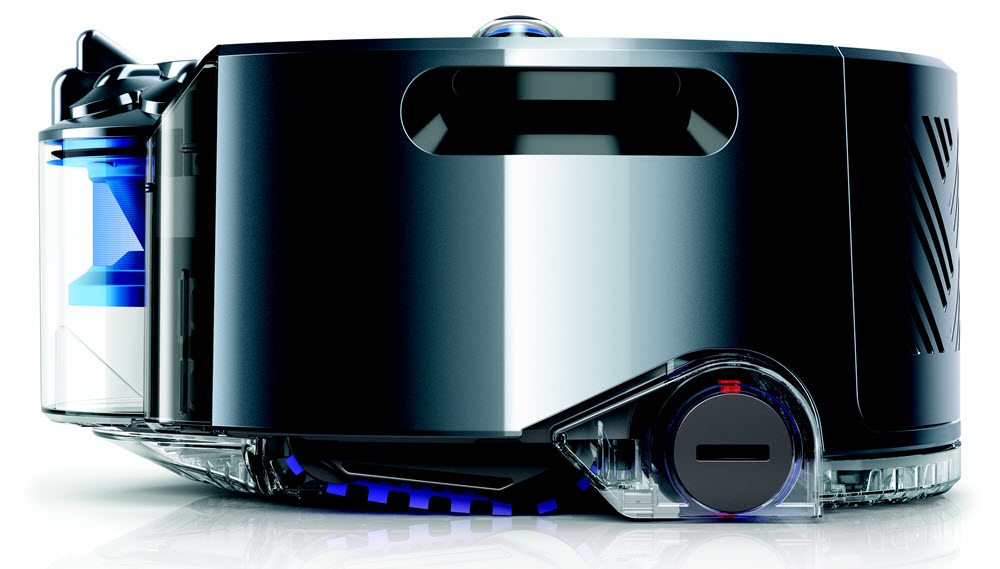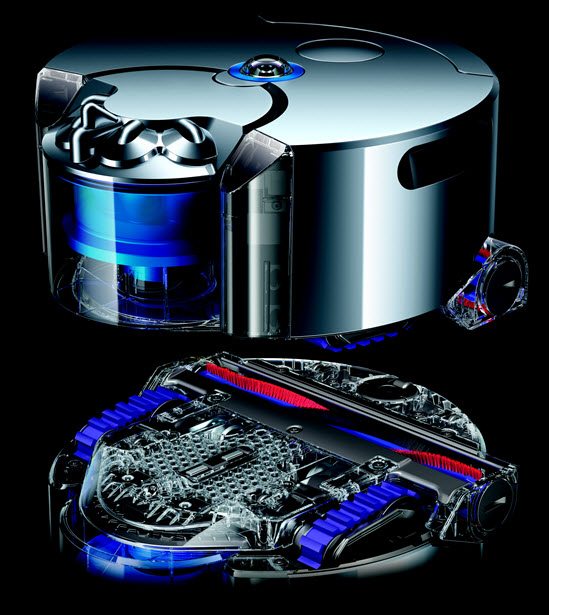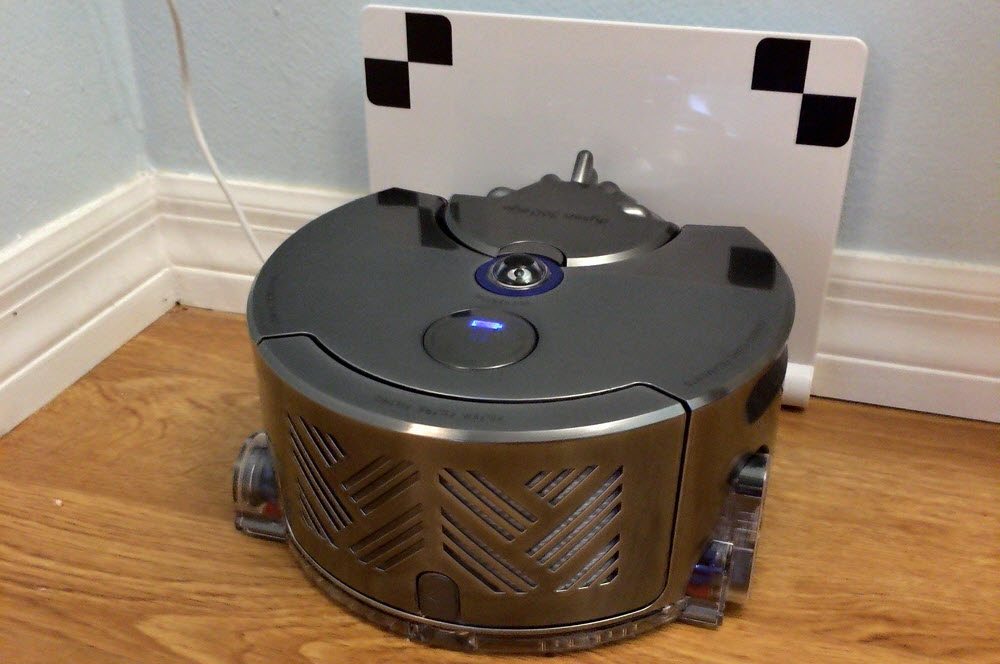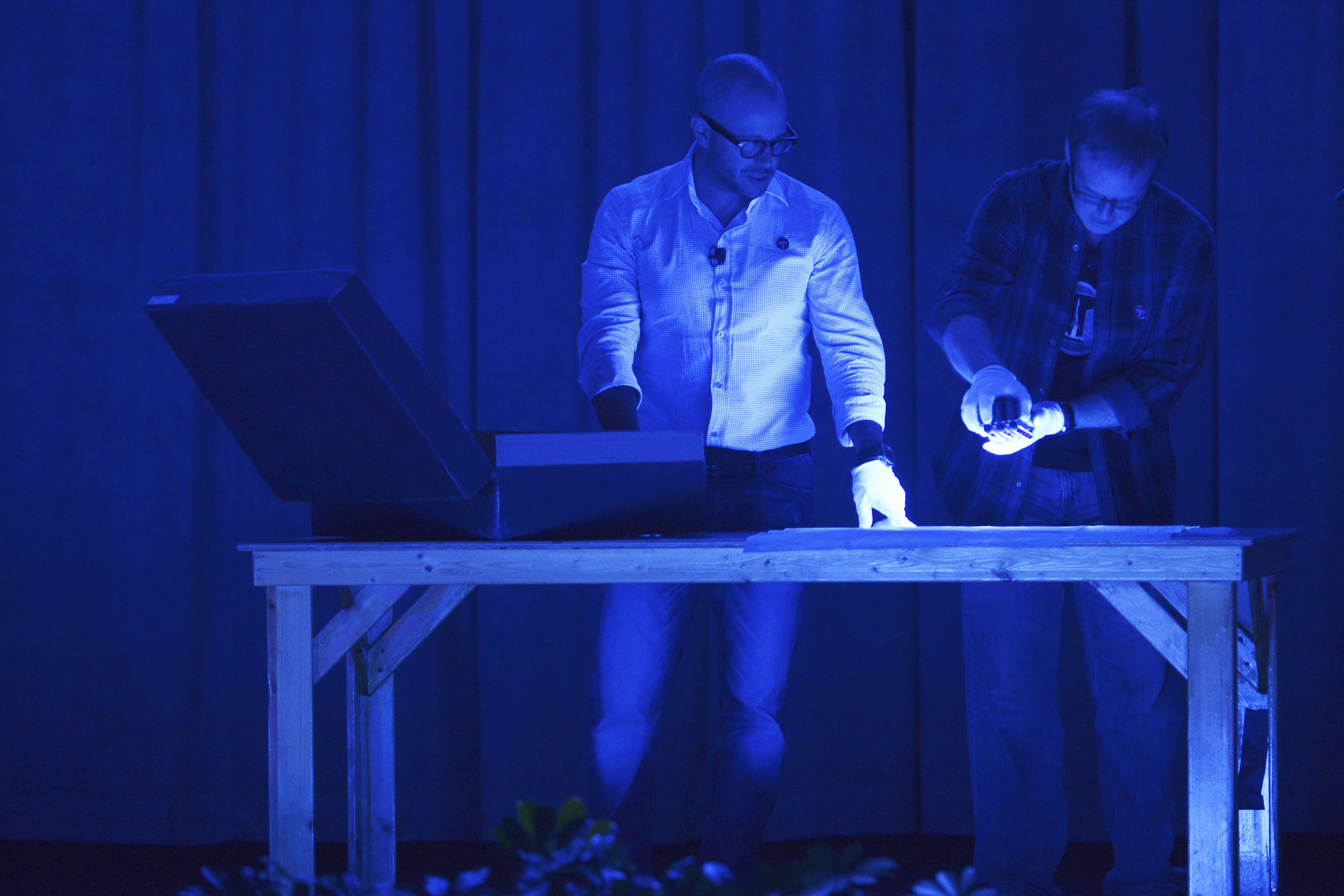
Last year, I sent my trusty old bumper-car of a Roomba to that scrap heap in the sky. It had served my family well, but the Neato Botvac D80 had claimed its spot as the defeater of dust bunnies in our house. It was obedient, intelligent, and, when it wasn’t getting itself jammed sideways under our dining room table, the most effective robo-vac we had ever used.
That all changed when the package from Dyson showed up at our door.
Inside was the Dyson 360 Eye – a robo-vac that I have been waiting for since I bought my first Roomba nearly ten years ago. At that time, I lamented that Dyson didn’t make one. They actually were working on a robot at the time, but it was an ungainly thing that looked more like a mobile hazardous waste disposal unit than a robo-vac. This was mostly due to the fact that, as with all of their vacuums, Dyson was unwilling to sacrifice suction in order to reduce size.
Fast forward to a few years later and I picked up the first Dyson hand vac (that I still use on a regular basis, actually). That dedication to suction power was still evident – it looked more like a ray gun than a vacuum. It was essentially a giant suction unit finished in glossy plastic. I loved it. The core of that first hand vac has been refined further and further over the years, becoming more powerful and reducing in size as technology improved, to where the Root Cyclone canister is now the core of a whole line of stand-up vacuum replacements. It’s that refinement that informs the design of the Dyson 360 Eye.
If you took a Dyson V6 hand vac, chopped off the parts that weren’t the motor or canister, squished it down a bit, and added some tank treads, you’d have something pretty close to the Dyson 360 Eye (though it actually uses the smaller, lighter V2 engine as its core). Just glancing at it, you can tell right away that it hews to the same Dyson core design. It’s actually a lot smaller in diameter than you’d expect, about 2-3 inches less than its competitors. What it lacks in width, it makes up for in height – the 360 is anything but low-profile. For some, this may be a deal-breaker. After all, being able to vacuum under couches and other furniture has always been a handy robo-vac feature. But for me, I’ve never owned more than one piece of furniture that my vac could fit under and there were innumerable days in the past year where I would find my Neato jammed, having attempted to get under something it could get its front under, but not its back.

The 360 sports a glossy silver chassis, with blue accents in the clear dirt bin. More than just for show, that clear dirt bin let’s you determine at a glance if you need to empty it out. I’m not sure what kind of plastic they use in this thing; but it seems to repel dirt – give it a quick rinse (if you’re so inclined) and the dirt bin is right back to looking brand new. On every other vac I’ve owned, the dirt bin is always the first to demonstrate wear after being pressed into service. Speaking of washable, the 360 has two washable filters that Dyson recommends you rinse out every month to maintain performance. Having bought a metric ton of filters for my Roomba over the past ten years, I’m thrilled. The “360 Eye” refers to the diminutive hump of a 360-degree camera in the middle of the bot. This scans the area and lets the 360 know where to go. Unfortunately, that means that vacuuming in the middle of the night is out of the question (not that you’d want to do that… more on why in a minute). The 360 needs at least some light to work.

Setup doesn’t take long at all. Once you set up the docking station (that has a very convenient cord wrap built in to the power brick) and place the diminutive bot on to charge up for the first time, everything else is handled via the Dyson app. There’s no screen at all on the 360 itself, so you’re not stuck navigating subtree menus or attempting to parse cryptic messages on a tiny screen. The app is very clear cut and makes scheduling a breeze. There are setup and troubleshooting videos throughout the app so that you can find information on whatever you need. The app is also supposed to keep you abreast of firmware updates and take care of them over-the-air (there is also a USB port on the vacuum that you can use to manually update the bot). It didn’t quite work for me; but I’m sure the kinks will get worked out of the system as the platform matures. One other annoyance is that it doesn’t have a reminder for washing the 360 Eye’s filters. Hopefully that gets added in a future update, since keeping the filters clean is crucial to maintaining performance.
All of the shiny plastic and advanced interfaces in the world don’t matter, though, if the vacuum doesn’t actually perform. In this, the Dyson excels. Suction on the 360 is powerful and on par with its competitors. The app shows you exactly where the vac has been, how long it took to vacuum the area, and whether or not it’s charging to go out again. All that suction power means that it burns through its charge pretty quickly, but if you’re having it run during the day while you’re out, you’ll never notice. You’ll just appreciate coming home to dirt-free floors.
All of this isn’t to say that that the Dyson is perfect. It occasionally decides that the patio on the other side of my sliding glass door is a room it has to get to and will mire itself trying to get out there. And while I appreciate that the bot doesn’t chirp or beep when it has a fault—that gets old fast—the app messages that you receive instead are often too cryptic to be actionable. But these are things that can be addressed in future app and firmware updates. I’d love to see more robust battery life as well; but Dyson has a reputation for making decisions that favor suction power over battery life. While they balanced it as best they could in the 360, it’s very clear that they chose to make their first retail bot more of a sprinter than a marathon runner.
The only other thing you’ll have to get used to is the volume. Dyson claims that the 360 Eye gets twice the suction power of any other robot vacuum. When you first power it up, you’ll definitely hear every pound of pressure being pushed through the bot. It’s loud enough that Dyson went so far as to introduce a Quiet mode in the latest updates. It takes longer, as the 360 needs to spend more time on each area; but suction is reduced enough so that the roar dulls to a background hum. Listen for yourself. The video starts off with the 360 at Max suction, then I switch on Quiet mode in the app. What’s nice is that this can be done on the fly, handy if you need to take a call or the bot is just getting too loud.
Pre-orders for the Dyson 360 Eye are live now on Amazon and BestBuy.com, with a target ship date of mid-September. And this is where my new favorite bot vac shows its Achilles heel – pricing. Keeping in line with the premium pricing of the rest of Dyson’s products, the 360 Eye will set you back $999, a full $100 more than its most advanced competitor, the Roomba 980. Is it worth the premium? There’s no denying that Dyson makes a superior product. When I bought my first home back in 1999, Dyson was only just starting to sell its vacuums in the U.S. I blew them off. Even though I was intrigued by their design approach—they looked like nothing else on the market—the price was just too high. Fast forward a year and two cheaper self-destructed vacuums later, and we bit the bullet and got a purple Dyson Animal. Today that vacuum is still sitting in our broom closet and is just as powerful now as it was when it was purchased. Dyson makes products that last. Considering the amount of use that robot vacs get, I’m more than happy to spend a bit more knowing that I don’t have to waste money on broken parts or replaceable filters down the line. There’s no question, Dyson’s first state-side entry into the robot vacuum market is an unabashed success and the bot vac that all other competitors will be chasing from here on out.
A sample 360 Eye was provided by Dyson for this review. Opinions are my own.





Try the Roomba 980 and you’ll never go back to Neato or Dyson.
Neato get’s stucked all the time and Dyson does a great job picking up dirt but has trouble reaching it.
I’d love to try a Roomba 980! If only Roomba would respond to my emails… 😉
The article title says that the Dyson is the “winner of the bot vac wars”, yet the article gives almost no justification for this verdict.
For example, the author says that the Dyson performance “excels”, yet suction “is powerful and on par with its competitors”. Does it excel, or only on par?
The author then describes many negatives of the Dyson, such as noise, lighting requirement, failure to notice glass obstacles, problems with the app, and most importantly, price.
In fact, aside from the washable filters, I don’t see a single positive thing that the author had to say about the Dyson to justify his opinion that the 360 Eye is an “unabashed success”.